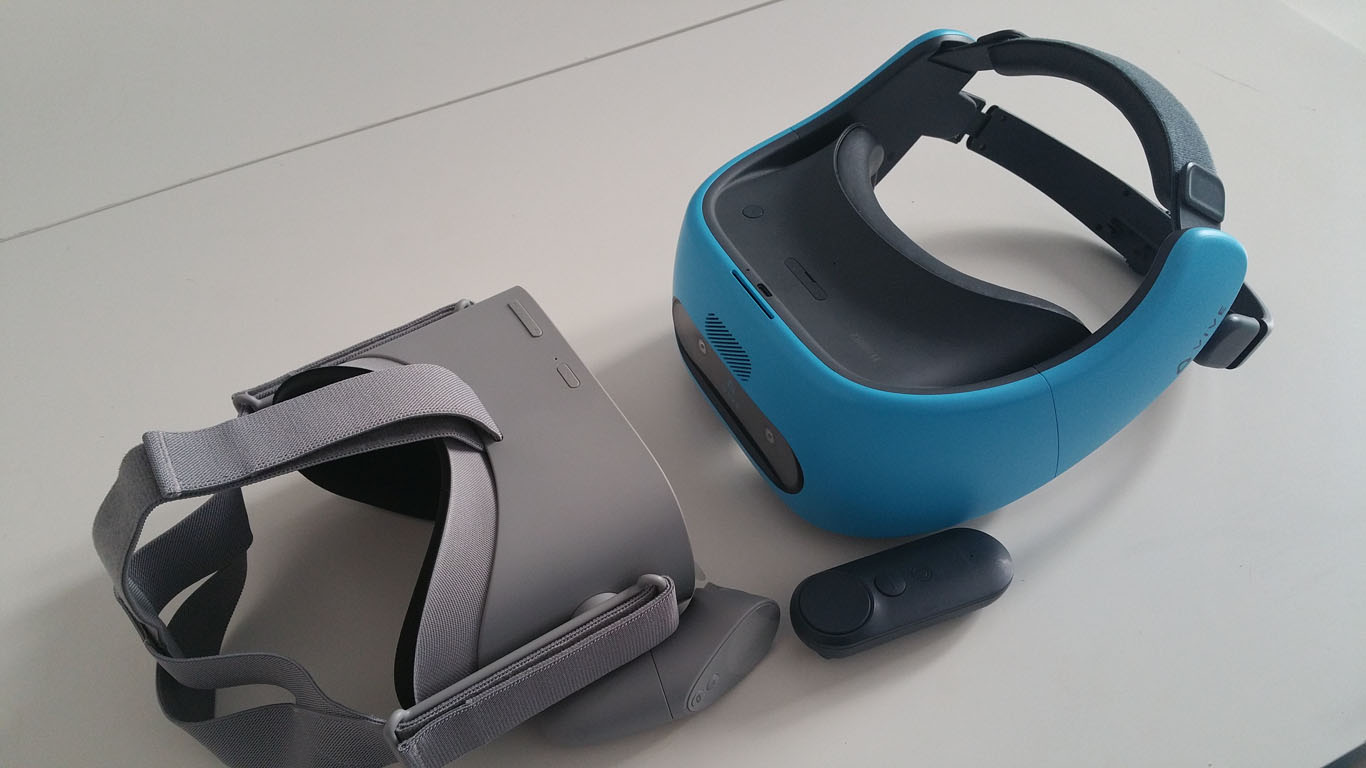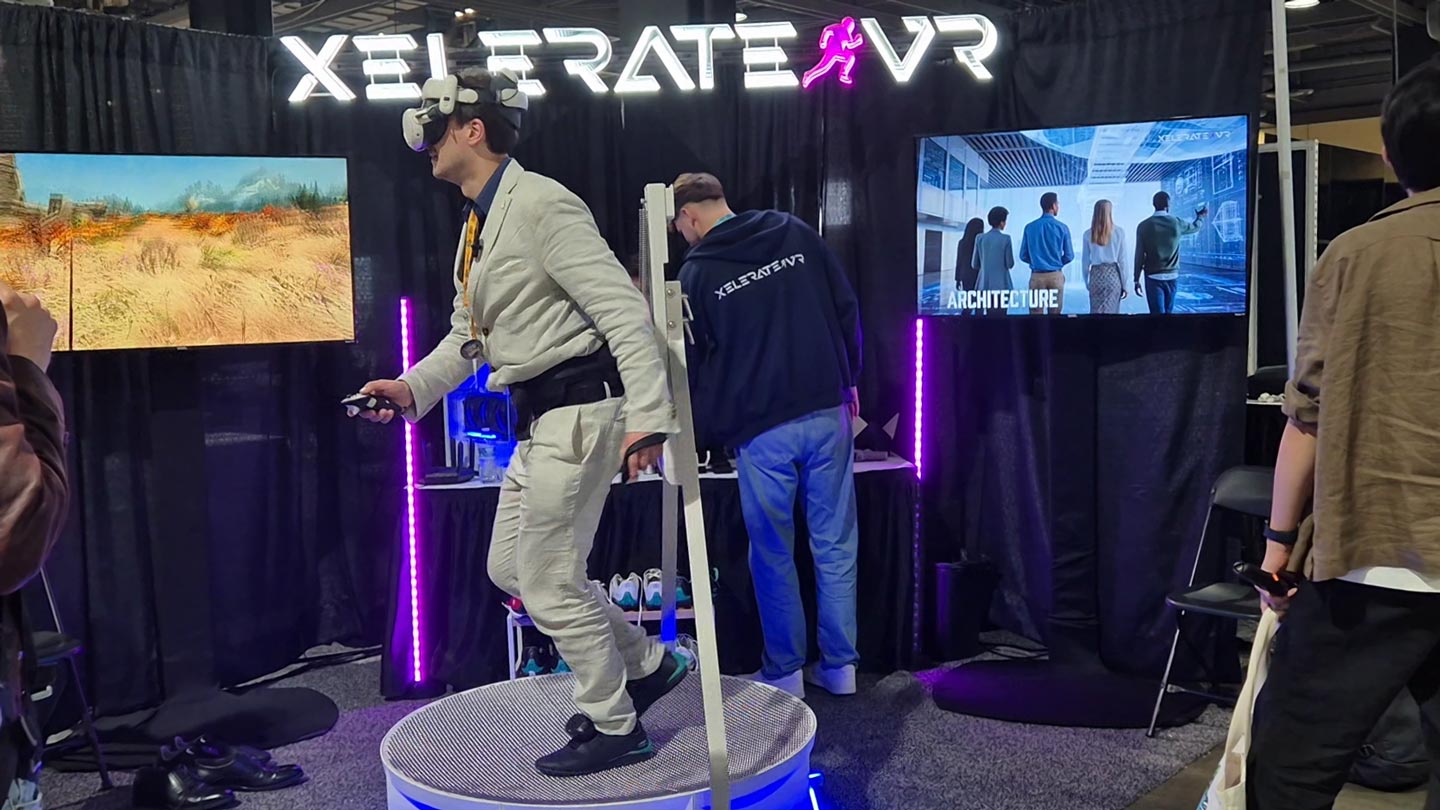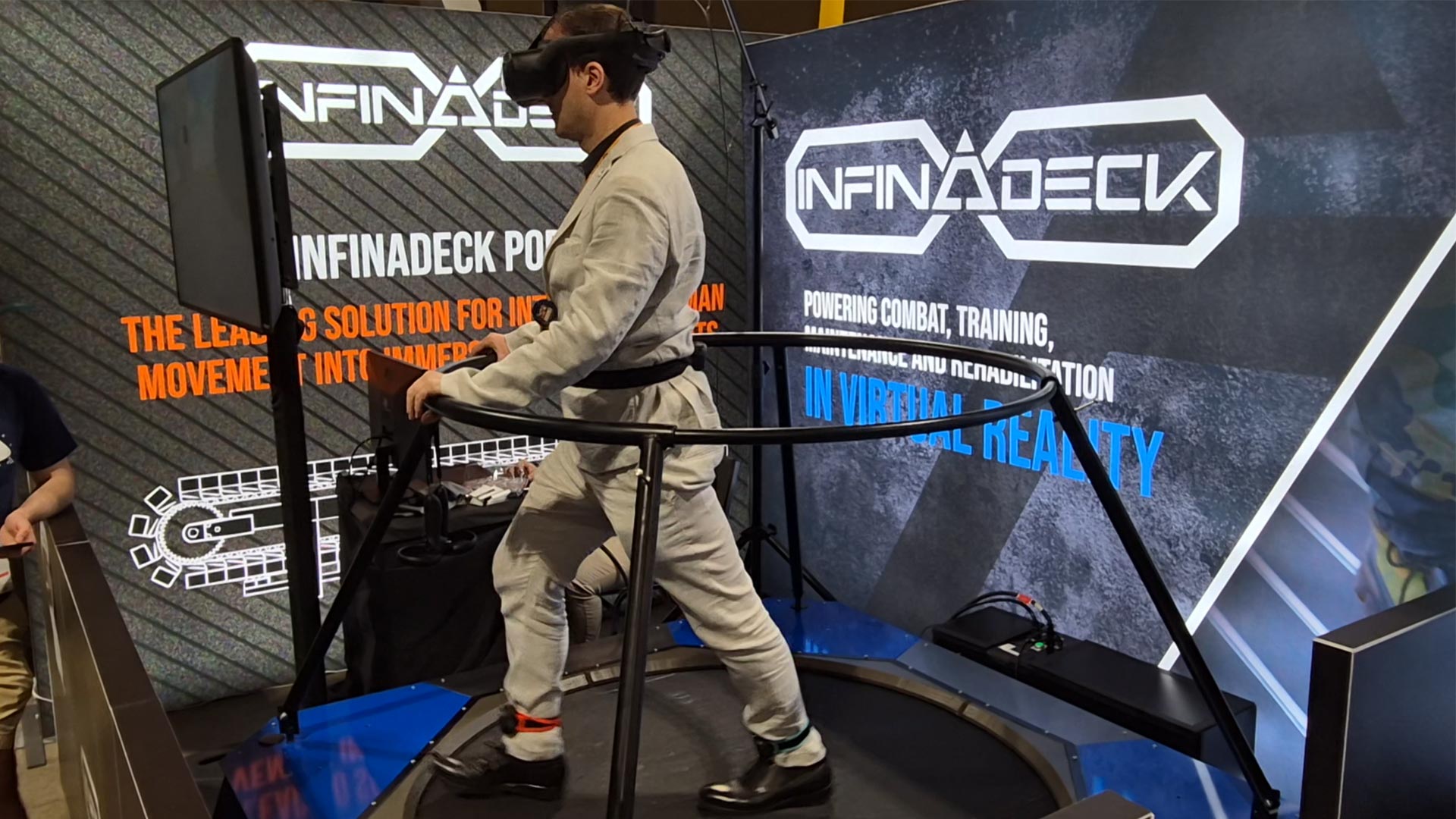Oculus Go vs Vive Focus: which one to buy?
In the last times, a lot of people have asked me which kind of headset to buy. There are various new devices out there and there may be some confusion about which one of them investing money onto. Oculus Go, Vive Focus, and Lenovo Mirage Solo seem great pieces of technologies, but which one to buy? Well, I haven’t been able to test the Mirage Solo yet, but I have played around with the Oculus Go and Vive Focus, so let me do a comparison for you.
Before starting, I know that some of you will argue that the Go and the Focus are two different devices, with different characteristics: I completely agree with you, but the point here is helping people that have a budget to invest in VR in deciding on which kind of device spend the money on, which one is suitable for their necessities, it is not deciding which one is the best headset.
Let’s start my personal comparison.
Technical specifications
Some days ago I was reading this great comparison of standalone headsets written by Alex Coulombe, and I found this interesting chart that compares the Focus, Go and Mirage Solo characteristics. I think it is great to compare the devices in an effective way, so let me paste it here.

Having provided you this awesome table that shows the differences in an effective way (thanks, Alex!), I can now start writing something that can’t be summarized with a simple chart.
Appearance: no winners

The Go and the Focus have a completely different style.
The Go is more refined and more classy, while the Focus is bulkier and seems more like a toy. This holds especially for the blue version of the Focus that I own: the white one is surely more elegant (and it is great that you can choose the style of the Focus that more fits you!), but IMHO the Go is still a bit more classy even of that one.
If you need a device that has an Apple-like stylish appearance, then the Go is the device you’re looking for. If you need something more informal, go for the Focus. If you don’t care about this stuff, go on reading the other paragraphs 😛
Comfort: no winners
Both the Vive Focus and the Oculus Go are comfortable headsets. They are comfortable in a different way, but both are very nice to wear.
The strong points of the Go‘s comfort are mainly:
- The fabric and the foam, that give a great sensation on the skin;
- The controller, that really fits well in the hand.
What is bad, instead, is the elastic straps that are used to fit the device on the back side of your head: they feel so Oculus DK2 and are a pain to wear and to adjust.

The Vive Focus instead is awesome because of the instant-on feature, that makes you wear and adjust the device in seconds. The rear part is very solid and has the famous knob that all the most recent headsets use to secure the HMD to the head. I love putting on the Focus because it is a fast and effective operation.
The leatherette material that gets in contact with the face is IMHO less fluffy and comfortable than the one of the Go but has the great advantage that can be cleaned more easily.

Since the Focus is a 6 DOF headset, it has more stuff inside and so it appears bigger and heavier… anyway when you have it on your head, it doesn’t feel bulky at all.
Both devices are comfortable for people with glasses and both have integrated audio so you may avoid wearing headphones.

Visuals: Focus wins
Since you pay the Focus 3x the Price of the Go, it surely must offer some advantages. One of them is the visuals, that on the Focus are far better than the Go. The reasons? Well, the Focus has:
- IPD adjustment that lets you adjust the screen to your eyes characteristics;
- An OLED display that is better than the cheaper LCD of the Go;
- The pentile distribution of the OLED display that makes the screen door effect less noticeable: the Go has all pixels in a perfect grid and this in some way makes the SDE more noticeable and annoying;
- 1600×1440 resolution vs 1280×1440;
- More FPS: 75Hz vs 60-72Hz of the Go;
- More horsepower: since the Focus is based on Snapdragon 835 reference design and the Go on Snapdragon 821, this means that the Focus can show more complex and visually appealing scenes than the Go.

The difference in visual quality is, in my opinion, noticeable: the Focus feels more like a prosumer device, while the Go a cheaper headset for the average consumer. But don’t misunderstand me: the visuals of the Go aren’t bad at all, the application I tried felt very good. But they’re worse than the one of the Focus.
Regarding the lenses, my opinion is a “meh” for both devices. Lenses of both devices show a lot of god rays and also a lot of distortions near to the edges. It is interesting to notice that while the Focus show spherical aberration next to the edges, the Go shows chromatic aberration.
So, if you work in an environment where visual quality is of fundamental importance, you know what device you should buy.
Audio: I guess they’re the same
Both devices have an integrated mic and integrated audio. And both of them allow you to add your personal headphones if you don’t want other people to hear what you’re hearing (ideal for porn 🙂 ). From my tests, they are both great, but I’ve not a trained ear, so maybe someone with finer ears than me should answer this question.

Controller: Focus slightly wins
The controller is fundamental to interact with our VR experiences and unluckily both of them appear a bit unsatisfying because they’re only 3 DOF remotes, that is can’t detect the position in space. Furthermore, both of them require continuous recalibration everytime you put on your headset and that’s annoying as hell.
https://gfycat.com/gifs/detail/ShorttermScarceFritillarybutterfly
Vive Focus offers more functionalities with its remote, because:
- It is actually a 3DOF+ one, that is at least tries to reconstruct some kind of positional offset. The problem is that this guess isn’t always right… but when it works, it is better than the rotational-only Go controller;
- It can vibrate and that’s great to provide feedback to the user;
- It has the volume controls on it and that’s super handy when you have to change volume.
Notwithstanding these improvements, it doesn’t win completely because the Go’s controller is really more comfortable and fits better inside the hand.

So: Oculus controller is more ergonomic and the Focus one has more features.
Tracking: Focus wins easily
The Oculus Go is a 3DOF headset, so it has not room-scale tracking. The Vive Focus has it and so wins easily this comparison. The tracking on the Focus doesn’t appear smooth as on the Vive yet, but it works well. And I’ve tried to wear the Focus and move across a house and the inside-out tracking continued to work all the time…wow!

If you need a device that can track the movement of the user, you have to buy the Focus. Instead, if you just need the user to play some experiences while seated, the Go is perfect for the purpose. I have to say that while I play seated experiences on the Go, often I don’t move that much my head and so I hardly feel the lack of the positional tracking… I only notice it when I want to inspect better something and so I lean forward, to notice that things move with me. The lack of positional tracking can make also people more nauseated… but honestly I think that for the kind of experiences that are on the Go, the lack of positional tracking is not a big deal. Of course, having it enables a lot more applications… some days ago I played a game on Viveport where I dodged bullets with my head and it was cool!
Camera stream: Focus wins
Another feature completely absent from the Go is the ability to access the camera stream of the device… for the simple reason that the Go has no frontal camera. The Focus has two and it is possible to access the cameras stream via code to enable some kind of mixed reality applications (even if no SDK has been released for it, yet). This means that for R&D departments, the Focus is far more interesting.
UPDATE: Vive has recently announced a new passthrough mode for the Vive Focus and also a new light gesture recognition SDK… this is an awesome win for the Focus.

Battery life: Focus wins
The Focus can last up to three hours, the Go up to 2-2.5. Furthermore, the Focus, when you don’t use it, at first goes in standby mode and then automatically shuts down itself. This is very very convenient: usually, I just use a device and then I leave it on my desk after the use without shutting it down, just in case I need it again in the following minutes. With the Focus, this is perfectly ok. With the Go, it is not: when I did this, remaining on my desk in standby mode for too many hours, the battery drained completely and I had to recharge the device before using it again. A plus point for the Focus.
App ecosystem: Go wins

Oculus Go has started with thousands of compatible apps since Day 1: some of them are bad and some of them are good… but they are a lot. When my Go arrived, I started playing with various experiences and I went to the space, then I relaxed by fishing a bit, then I watched a movie, then I entered a mech and shot some enemies… and so on. Oculus store is great.
Vive Focus uses the Viveport ecosystem, that is rather new. Most apps are in Chinese and the quality is inferior to the ones that you can find on Oculus Store. This is understandable, since this is an ecosystem that Vive is trying to jumpstart while Oculus Store is up and running since a lot of time… but for the user, the result is that at the current time of writing, the Oculus Store appears satisfying, while Viveport mostly not.
UPDATE: now you can use Riftcat VRidge to play SteamVR games on the Focus. This means that you can play great content even on the Focus, now… even if actually they’re experiences dedicated to PC VR and expect a different control schema.
If you want a device just to play, go for the Go.
User Interface: Go wins
Even regarding the device UI, Oculus Go is more usable than its Chinese competitor: the UX is cleaner, neater and more coherent. It is easier to be used. Furthermore, some useful stuff, like streaming and recording of a video can be done really with just two or three clicks, while the Focus needs more effort.
The Focus is improving on this side: when I tried it the first time, its interface was quite confusing, but now it is improved a lot and it has become usable. So, I guess that HTC has understood that it has a problem and is working hard to close this gap.
The advantage of the Focus over the Go is that you don’t have to use that damn companion app to set the various settings: you just do everything inside the headset.
Development environment: Go slightly wins
How is developing for the Go and for the Focus? Mah, it is mostly good for both ecosystems. The advantage of developing for the Go is that you use the same tools that you used to develop for Gear VR (and for the Rift), so you have to learn nothing new. Furthermore, the Oculus APIs are well documented and there is already a great community about them.
The Vive Wave plugin is not complicated, but it is something that you have to learn from scratch and its documentation is not top-notch. The Western community is little. Here hold the same considerations that I did for Viveport: it is something new, so it needs time to grow. The great side of Vive Wave is that it is like the OpenVR of the standalone headsets: it is made to support plenty of standalone headsets, so you can develop for the Focus and see your program work even for the Pico Neo, for instance. And then on the Focus, there is the preview utility developed by me to test the content you’re creating in Unity without building it!
https://gfycat.com/gifs/detail/EmbellishedWarmheartedChimpanzee
Regarding opportunities for us developers, the Oculus Go surely offers a more mature app ecosystem and so more opportunity to monetize, but since Viveport is still unripe, there is the opportunity to become a leader in that market.
Cost: Go wins
200$ vs 500-600$… what else should I say? Oculus Go is super cheap and affordable for almost every pocket.
Final judgment: what should you buy?

As my professors at the Polytechnic loved to say: it all depends on what are your requirements, there is not a one-size-fits-all solution.
The Oculus Go is a consumer device that is perfect for enjoying seated experiences. It is affordable, it is polished, it is easy to be used: it offers few features, but it offers those few ones very very well. It has a rich app ecosystem and is perfect for casual use of VR… if you need to enjoy some 360 videos or VR games once in a while, the Go is a great device.
Buy the Go if you fall in one of the following cases:
- You love to play in a relaxed way while seated;
- You just want a device to play some nice games and/or watch movies;
- You don’t care about technical specs, you just want something that works well;
- You work with 360 videos: proposing to your customers a stand with 10 Go stations is far cheaper than proposing a stand with 10 Gear VR. This means that if you work for some marketing sector, the Go can be the ideal choice;
- You plan to develop for the Oculus Store ecosystem, that is a mature ecosystem;
- You are on a tight budget;
- Your technical skills are not awesome, so you need a device that is super user-friendly;
- You love a classy design;
- You secretly love Mark Zuckerberg.
The Vive Focus is instead a prosumer device that offers advanced features that may not interest consumers, but that are great for techies and R&D departments: the 6 DOF tracking allows far more interactions and the camera stream, for instance, can enable awesome experimental MR applications. It appears as a bulkier and a bit less user-friendly device, but it is surely more powerful.
Buy the Focus if:
- For you, the more features, the better. Price is not a problem;
- You love experimenting with VR stuff (moving in large spaces, do MR stuff, etc…);
- You work in R&D departments or other enterprise sectors, where all the Focus features are important for various applications (training, etc…);
- You want to play experiences where you can move and interact with environments… seated VR is not true VR;
- You don’t care about playing a lot of games, you also want to develop;
- You want to bet on Viveport: since it is an unripe ecosystem, there are more opportunities to show off. Oculus Store is already overcrowded and it is difficult to get noticed;
- You are Chinese and so you can understand the apps on Viveport;
- You secretly love Alvin Wang Graylin.
I have both of them on my desk and I think that both of them are great devices to do different things: I find the Go great to relax myself playing some simple games like “Bait!”, while the Focus triggers in me a lot of desire to experiment with tracking in large spaces and use of cameras. And if you are a consultant like me, I think that you should own both: the Go is better for marketing solutions where you just have to show 360 videos or such, while the Focus is better for more complex experiences like for instance training ones.
I hope you enjoyed this comparison and that it will help you in choosing the headset that you will buy. If this is the case, show your appreciation by subscribing to my newsletter filling this nice form below!
Disclaimer: this blog contains advertisement and affiliate links to sustain itself. If you click on an affiliate link, I'll be very happy because I'll earn a small commission on your purchase. You can find my boring full disclosure here.




Another great post Tony! …Thank you very much for share.
Thank you very much for reading it!
Didn’t know the Focus will turn off after a while in sleep mode, that’s great! Cannot understand why they don’t implemented it in the Go but hopefully we have some luck in a future firmware update… An alternative for now is to leave it in sleep mode but connected to the power supply so the battery doesn’t gets fully drained, but I guess that goes against all and each one of battery longevity best practices haha
I guess that sooner or later Oculus will implement it!
Came here in vacation and I’ll make you try the Focus!